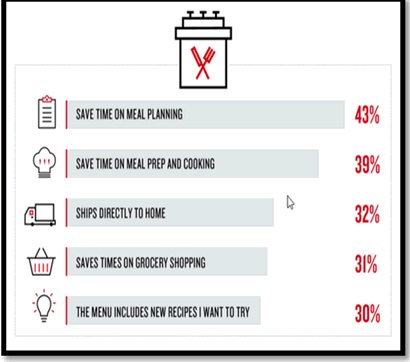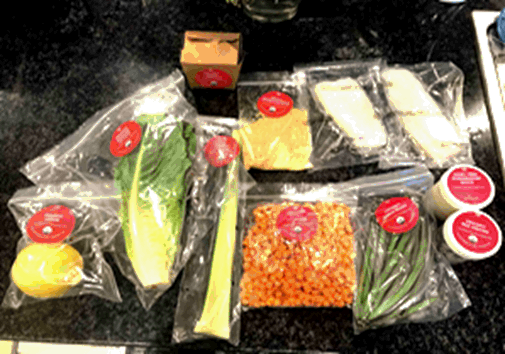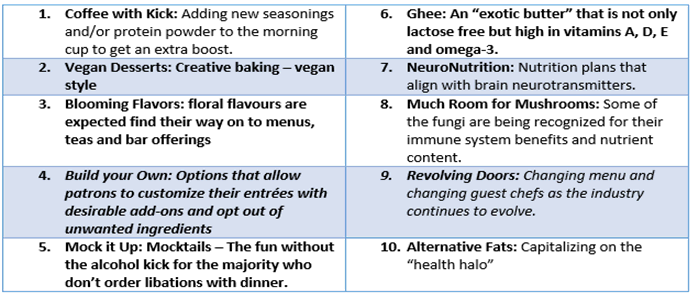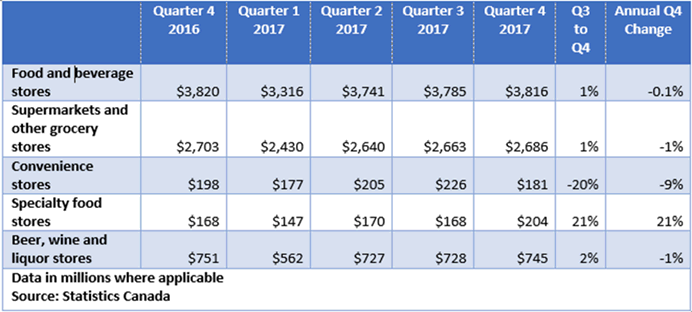| | Meal Kits - A Variation on a Convenient Dinner
What’s for dinner? A common question asked by many individuals at the end of a busy work day. If meal preparation and grocery shopping are not your thing there may be a new answer to this age-old question - the meal kit.
A meal kit is a package that contains all the fixings needed to make a recipe of your choosing. After picking your weekly selection(s) online, the ingredients are all prepared, measured out and delivered to your home. All that you need to do is add oil, salt, and pepper then cook according to directions – usually taking only about 30 minutes. It is a way for those who dislike grocery shopping, want fresh food and are tired of ordering out to get the meal they want.
These kits offer not only convenience, but are also viewed as a way to introduce a variety of new, chef-inspired and fresh meals to your family’s weekly menu. For a smaller household, they can represent a way to try different recipes without having to purchase a full size package of an ingredient that will rarely get used again. For the kitchen newbie, it can be a way to tentatively try cooking by following the instructions.
The Nielsen Canada survey, conducted in early 2017, found the reasons why Canadian households are purchasing meal kits (Figure 1). Primarily, meal kits are a convenience item for today’s hectic lifestyles.
Figure 1: Meat Kit Purchase Triggers in Canada
Panelview Survey, May 19-June 8, 2017 Source: Nielsen Homescan

The Canadian market for meal kits is at a very early stage, but it does show promise. It represents a $120 million industry in Canada. Market research company NPD Group states that “ready to eat meals from grocers and meal kits were the fastest-growing food segment last year with an eight per cent market share and growth of 20 per cent a year”.
While only four per cent of Canadian households have purchased a meal kit in the last 12 months (compared to 25 per cent in the US), 80 per cent of those continued to use the service after the trial period. Additionally 63 per cent of consumers would consider purchasing a meal kit if they were less expensive. A cursory scan of the available services in Edmonton shows that most are around $10-15 per person/meal. So for a family of four, two meals a week would cost between $80-120/ week.
On-line retailers and some traditional grocers are recognizing the potential of this opportunity by investing in or partnering with meal kit companies. Metro Inc. recently invested in MissFresh. Walmart has started to offer Home Chef meal kits on its site. To their Amazon Prime subscribers, Amazon offers “shoppable recipes” that can be delivered to your door. It may be Amazon that is driving the bricks and mortar grocery stores to venture into this arena. As one of the world leaders in online retail, Amazon’s purchase of Whole Foods was a pretty good signal that food is their next product focus.
According to Nielsen Canada, meal kits present a clear opportunity to attract new customers. The fact that 30 per cent of Canadians would like to purchase meal kits at their local grocery store provides a substantial growth opportunity for local retailers in this expanding market.
So now, for at least a couple of times a week, the answer to “what’s for dinner” may already be sitting in your fridge waiting for you to get home and get cooking.

2018 Food Trends
With the New Year comes the annual forecasted trends and new products offerings that industry experts predict to see in the next 12 months. While there are many organizations and experts offering their vision, two Canadian sources were chosen to give a peek at what could be coming for those in the Alberta food industry in the next year.

Loblaw trends and Restaurant Canada for food service/dining trends.
The Loblaw Food Council is a group of Canadian food experts ranging from internal authorities, chefs, dietitians to academics. From a summer 2017 meeting, they developed some expectations for food trends in the coming year. Their predictions fall within the following five themes:
- Closing the Food Loop: GIY (Grow it yourself), right size portioning and leftover revival were trends linked under this theme. The latter two have reducing food waste as a central value as individuals start to cook only what they know they can eat and then look for ways to serve up the leftovers in a tasty fashion. GIY is a way for the public to gain a better understanding of where food comes from with their own backyard (or balcony) garden and the evolving acceptance of backyard beehives and chicken coops.
- Occasional Indulgence: Freak shakes, wake and cake and full fat are activities linked under the indulgence theme. Freak shakes involves making your milkshake more dessert-like (cake, pie, Nanaimo bars, etc.) than a regular shake. Cake (or other sweet treats) for breakfast is seen a way to indulge but with more time to work off those calories. As the understanding of good and bad fats improves, Canadians may turn to the fuller fat options for products that provide a more desirable fat (i.e. yogurt, milk).
- Rediscovering Traditions: Dual-purpose ingredients is where consumers shop for one item, but use it not only as food but for another use. The examples cited were seaweed for eating and skin care, florals for tea, baking and bath bombs. Retro-inspired meals is all about going back to your childhood for meal ideas and giving them a modern twist.
- Rethinking Nutrition: Renewed nutrition focus, gut health and reduced sugar were the trends identified for this theme. A renewed nutrition focus is expected to come about with the updated Canadian Food Guide as Canadians learn, understand and adapt to the changes being suggested in the guide. Gut health encompasses activities and products that promote good stomach flora. Food containing probiotics and fermented foods fall under this category. Sugar consumption is being looked at more closely and Canadians are looking at ways to reduce this intake.
- Cooking on the Clock: Breakfast with a twist and meal kits are both examples of time efficient approaches for healthily mealtimes. Meal kits, as mentioned previously, are a way to get a great tasting, fresh meal relatively quickly. Consumers are also looking for quick, portable, and protein filled breakfast options. This may include things made beforehand that might also include non-traditional morning proteins like chicken, pulses or seafood.
Restaurant Canada’s annual February show is Canada’s largest food service trade event. In early January they released the top 10 trends they expect to impact Canadian foodservice in the year ahead.
2018 includes:

Data Highlights

Overall Food and Beverage Store sales saw a slight increase in 2017 from the third to fourth quarter. Specialty food stores saw the greatest increase at 21 per cent while convenience stores saw a 20 per cent decrease in the same time period. Annual fourth quarter change was slightly negative for all categories except for the specialty foods stores again.
Sources:
Meal Kits
Financial Post. 2018.Pretty impressive: Metro gets boost from meal kit business, raises dividend. http://business.financialpost.com/news/retail-marketing/pretty-impressive-metro-inc-gets-boost-from-meal-kit-business-raises-dividend
Canadian Grocer. 2017. Amazon partners with food-focused website on shoppable recipes. http://www.canadiangrocer.com/top-stories/headlines/amazon-partners-with-food-focused-websites-on-shoppable-recipes-76625?print
Canadian Grocer. 2017. Making the most of meal kits.
http://www.canadiangrocer.com/blog/making-the-most-of-meal-kits-76348?print
CBC News. 2017. Pros and cons of meal kit delivery services. http://www.cbc.ca/news/canada/calgary/meal-kit-delivery-services-pros-cons-1.4415251
The Globe and Mail. 2017. Meal kits grow into $120 million industry in Canada.
https://www.theglobeandmail.com/report-on-business/meal-kits-grow-into-120-million-industry-in-canada/article37312803/
The Verge. 2017. Walmart now sells meal kits, just like Amazon and Blue Apron.
https://www.theverge.com/2017/12/7/16745888/walmart-meal-kit-takeout-home-chef-cooking
Nielsen Canada . 2018. The Meal Kit Opportunity in Canada. http://www.nielsen.com/ca/en/insights/news/2017/the-meal-kit-opportunity-in-canada.html
Food Trends
Loblaw Companies Limited. 2018. Press release on Second Annual Canadian Food Trend List.
http://media.loblaw.ca/English/media-centre/press-releases/press-release-details/2017/Loblaw-2018-Canadian-Food-Trends-Encourage-Nation-to-Rediscover-and-Rethink/default.aspx
Food Service and Hospitality. 2018. RC show Highlights 2018 Food and Dining Trends.
http://www.foodserviceandhospitality.com/rc-show-highlights-2018-food-and-dining-trends/
Statistics Canada: Cansim table 080-0020 Retail trade, sales by the North American Industry Classification System (NAICS)
|
|